Pull-ups (also: Chin-ups) are among the most popular exercises in Bodyweight Training or in power training in general. On the one hand, this can be attributed to the enormous effectiveness of the exercise: With pull-ups, you can achieve a wide V-shaped back within a few weeks. On the other hand, pull-ups are characterised by their simplicity, without the need for lots of equipment – apart from your body weight and a pull-up bar, or an object you can pull yourself up on, you don't need anything else to do pull-ups. This means that you can do your workout almost anywhere.
In this article, you will find out everything you ever need to know about this popular bodyweight exercise. We explain what makes the pull-up training such a good exercise and what the perfect pull-up movement looks like. You will also learn which muscle groups are worked during pull-ups, and we will give you some useful tips on how to do your first pull-up or how to cope with more pull-ups. You will learn about the different grip variations you can use to shift the focus of the workout, and you will get an overview of some common mistakes people make when doing pull-ups. With our useful tips, there is nothing standing in the way of your effective, injury-free workout!
The reasons why you should include pull-ups in your workout
Besides the fact that you will strengthen your back with pull-ups, thus preventing poor posture, there are several other aspects that favour training on the pull-up bar:
- Pull-ups are universal, i.e. you need little or no equipment to perform them, and you can do your workout almost anywhere.
- This exercise does not only work the back, but also various other muscles of the torso (see below).
- This makes pull-ups suitable for a comprehensive torso workout.
- You can shift the focus of your workout by using different grips.
- Since you have to cope with your own body weight during the workout – which usually means a higher load than during equipment training, etc., pull-ups are an excellent exercise for building muscles.
- The complex movement targets several muscles at the same time. This results in a much higher energy requirement than for isolation exercises. In other words, pull-ups support fat burning, and they also appear to stimulate the afterburn effect. The latter ensures that you continue to burn calories after your workout.
It is also worth mentioning that the various versions of pull-ups give you a high level of motivation for your workouts. You can vary between the different grips repeatedly, so that your workout is always a lot of fun.
These muscles are worked when you do this exercise
Irrespective of the type and width of the grip you choose, pull-ups work the following muscles in particular. (Also see our extra article on the pull-up muscles.)
| Targeted Muscles | Supporting Musculature |
| Broad Back Muscles (Latissimus) | Spinal Erectors (Lower Back) |
| Lower Fibres of the Trapezoid Muscle | Biceps |
| Major and Minor Rhomboid Muscles | Brachialis |
| Teres Major | Brachial Muscle |

Tip: Since pull-ups also have a major impact on the arms, you might need to adjust your workout plan when introducing pull-ups to your workouts.
How to do the perfect pull-up

- Hang onto the bar with your arms straight and your shoulders relaxed. Assume the Hollow Body Position by pulling in your navel, tightening your bottom and pressing your legs tightly together. This prevents your back from hollowing during the execution.
- Activate your shoulder girdle by pulling your shoulder blades backwards and downwards (Scapula retraction). Keep your arms stretched.
- Once you have activated the shoulder girdle, begin to pull yourself upwards until your chin is above the bar.
- Concentrate on your breathing. Inhale as you pull yourself up, and exhale as you lower yourself.
- Execute the eccentric movement as slowly and with as much control as possible, until you are back in the starting position. Avoid swinging during the entire exercise.
- Try to complete the exercise without tilting or building up momentum, and include the full radius of movement.
Check out our Wall Pull-Up Bar!
[product="P-01009"]
While doing pull-ups, give particular attention to the following
Your head must be held straight during the entire movement. This way, you avoid cramping, and you will not experience neck pain or other discomfort.
- If you do not have a lot of experience with pull-ups, choose a grip that is the same width as your shoulders. This exercise is aimed primarily at working your back muscles.
- With very wide grip variants, there is a high risk of imprecise execution, which could lead to injuries of the tendons, joints and other structures.
Common mistakes in a pull-up workout

Many athletes tend to "cramp themselves up" on the bar, due to the great effort involved. The legs are swung upwards and the shoulders and head do not remain immobile. Beware! In this case, you will not only miss out on the effects of your workout, but you could also suffer serious injuries.
Other mistakes at a glance
- Half pull-ups. You must always do the complete movement (keyword: full movement amplitude), otherwise you will not be successful with your workout.
- Keeping your arms bent. You should not stretch your arms completely in the starting position, but that does not mean that they should be bent.
- Incorrect breathing. Exhaling as you pull yourself up and inhaling as you release!
- Dropping down. Even if "you simply can't carry on", you must come down in a controlled manner, otherwise the risk of injury is high.
- In our additional article, you will also find the biggest mistakes made in pull-up training, and how to avoid them.
Where can you do pull-ups?

As already mentioned, you need hardly any equipment for pull-ups. Ideally, you should use a high-quality pull-up bar for your workout. Not only will it offer you a high level of training safety, but it will also provide you with various grip options. This is how you get the most out of your pull-ups! A few of the models can even be used flexibly, i.e. you train at the location of your choice, both indoors and out.
But even without a pull-up bar, you can do an effective workout. For pull-ups, all you need is a stable object on which you can pull yourself up. This can be a horizontal bar, the crossbar of a football goal, a sturdy branch or something similar.
Tip: If you do pull-ups on gym rings, you will maximize the training effect. Due to the instability of the rings, your muscles have to "work together more closely" (inter and intramuscular coordination).
It’s always tough in the beginning – Tips for beginners

Every healthy person should be capable of doing several pull-ups at a time. If you can barely cope with half a repeat, the reasons can be diverse. Mostly, however, this suggests that your back and arm muscles are too weak to handle your bodyweight.
In the following section we will give you some invaluable tips on how to manage your first pull-up and perfect the exercise.
1) Use a chair, a stool or something similar for support and rest your feet on it. This will relieve the strain on your muscles and enable you to do more pull-ups.
2) A pull-up band, also known as a fitness or resistance band, is an even more practical aid. The band is made of highly elastic rubber, and it can be tied around the bar. Use it to support yourself, on your feet or knees, so that your upper body has less weight to support.
To our pull-up bands!
[product="P-00095"]
3) Negative pull-ups are an ideal way to build strength for the proper pull-ups. To do this, you start in the highest position of the movement and then lower yourself slowly. This version is much easier. You can get back to the highest position by resting your weight on a chair or something similar.
4) Your training partner can also help you with your first pull-ups by holding your legs or hips and helping you to pull up or lower your body in a controlled manner.
5) Lie underneath a railing or other bar, at an appropriate height above the ground, and grasp it with almost outstretched arms. Pull your straight, tense body upwards with a rowing motion, until your chest touches the bar. Alternatively, you can do it with gym rings.
Top 5 tips to achieve more pull-ups

Now you know how to work towards doing your first pull-up. Soon you will be able to do several pull-ups, one after the other. But, at some stage, you will reach a point of stagnation in your workouts: you will find that you are not be able to increase the number of repetitions. This is particularly due to the fact that your muscles "remember" the load and get used to the workout. If this happens, you should change your workout routine, and not merely choose a different grip (see below):
1) Vary the speed. Challenge your muscles anew by changing the speed of the movement (e.g. a conscious slow upward movement or a fast downward movement).
2) Strengthen the lats. The broad back muscles do most of the work during this exercise. Train them specifically (e.g. by lat pull-downs or bent over rowing) to enable you to cope with more pull-ups.
3) Use pull-up bands. The degree of support provided by a resistance band during the exercise depends on the strength of the rubber. Depending on your training level, you could choose a strong band, which will enable you to do more pull-ups. As soon as you are able to do the targeted number of repetitions, you can start using a weaker band. Continue in this way until you no longer need any support.
4) Biceps workout. Your two-headed brachialis muscle provides support during pull-ups. Strengthen it with short curls or barbell curls to improve your pull-up performance. You can also do strenuous biceps workouts on the pull-up bar!
5) Take a break from pull-ups. If you find yourself unable to increase the number of repetitions, it might be worth taking a break from pull-ups. Give your back muscles a complete break or replace the pull-ups with a lat pull-down workout or something similar. After about a five-day break from pull-ups, you'll be in top form!
Additional motivation: The world record for the most repetitions of pull-ups is 612 (!)
The best pull-up variations
You can use different grip variations to shift the focus to different muscle groups during the workout. The three most popular grips are wide pull-ups with an overhand grip, narrow pull-ups with an underhand grip and pull-ups using the neutral grip, also known as the hammer grip. In the following sections, you can read more about how these grip variations affect the latissimus.
Wide pull-ups with an overhand grip

With this variation, you will intensify the workout on the external oblique fibres of the broad back muscle. Although these only constitute a small part of the latissimus, they ensure that your back increases in width (keyword V-shaped back). Pull-ups done using this grip are much more strenuous than other pull-ups, because the innervated fibres are not only shorter than the vertical fibres, but the back muscle also has far fewer of these fibres.
By the way: Chin-ups using the wide overhand grip can be done either up to the chest or behind the neck. Many sportsmen and women swear by the effectiveness of the latter variation. However, it is accompanied by an unnatural and therefore unhealthy position of the shoulder joints. Therefore, we advise against this type of pull-up.
Narrow pull-ups with an underhand grip

Pull-ups using the narrow underhand grip are excellent for strengthening the lower vertical fibres of the broad back muscle. For this reason, this variation enables the deep muscles of your back to grow. Since these fibres make up a large portion of the latissimus and are also longer than the diagonal fibres, the exercise seems easier than pull-ups using a wide grip. This is also due to the fact that this movement causes your upper arms to be more strongly innervated than in the underhand grip.
Tip: Perform this exercise in the so-called monkey grip, to maximize the workout of the latissimus.
Chin-ups with a hammer grip

Neutral grip pull-ups are usually done with a narrow to shoulder-width grip, so the effects of the workout are the same as with narrow pull-ups with the underhand grip.
All of the grip variations at a glance
- Broad overhand grip
- Shoulder-width overhand grip
- Narrow overhand grip
- Narrow underhand grip
- Shoulder-width underhand grip
- Broad underhand grip
- Hammer grip (narrow to shoulder-width)
Does it make sense to do a pull-up workout every day?
Who is not familiar with them? Those elite soldiers, boxers and other (Hollywood) icons who begin each day with an intensive pull-up session. Apart from the fact that, in reality, this only applies to very few people, the question is whether a daily pull-up workout makes any sense at all?
The pros
- Timesaving. Pull-ups work the entire upper body and can therefore replace various isolation exercises.
- Limited effort. You do not even have to leave your home to work out on the pull-up bar.
- Range of variations. Thanks to the various ways in which they can be performed (see above), you can also stimulate growth with high training frequencies.
- Limited strain. If you do the exercise without additional weights, this type of workout is gentler on the musculoskeletal system compared to training with heavy weights.
The following aspects count against a daily pull-up workout
- Every athlete, no matter how experienced, needs regeneration phases, so that body and mind are able to recover from the workout stress. This is the only way to achieve maximum performance in the next session.
- Muscle growth begins during the regeneration phase. Doing pull-ups every day can therefore inhibit the process.
- If you are a beginner in terms of pull-ups, your body needs at least 48 hours to recover from a workout. Therefore, beginners should definitely not do a pull-up workout every day.
- If you are suffering from an orthopaedic condition, the muscles and fibres, and all of the other structures affected by the exercise, need more time to recover.
Extra Tip: Pure pull-up training cannot result in overtraining, but this does not mean that daily pull-ups cannot favour it. If you feel that you have reached your limit during your whole-body workout, you must definitely break off your workout plan (including the pull-up workout)!
Doing pull-ups every day is not useful!
As illustrated above, there are various factors that make daily pull-up training plausible. However, the disadvantages outweigh the advantages. Muscles can only grow if the body is given sufficient time to regenerate after a workout, and if there is a balance between exertion and rest. Moreover, the regeneration ensures maximum performance during the next workout. You can only make your pull-up workout effective if you pay attention to these aspects.
Note: If you can do 20 or more pull-ups effortlessly, you can still integrate them into your daily workout as a warm-up exercise. In this case, do not train until your muscles fail!
Is this exercise also suitable for women?

Many women are worried that pull-ups will make them look masculine (keyword swimmer's back) and therefore refrain from doing this exercise. But this is a misconception, and above all a big mistake, because women also benefit from this efficient exercise of the torso.
To avoid the back from getting (too) broad due to this exercise, you simply have to limit the number of repetitions: Do 15 to 20 repetitions per set and pause for 30 to 60 seconds between sets. Muscle failure is not the goal.
Tip: If you can only manage to do less than 15 repetitions, use our tips (see above) to achieve the desired number of pull-ups.
The best support aids for pull-ups
Finally, we would like to introduce you to some valuable devices to help you with your pull-ups. Use them to get the most out of your workout!
We have already mentioned pull-up bands several times in this article. This device guarantees that the exercise is executed correctly, and it helps you to achieve the number of repetitions you are aiming for. And the best part of all is that you can use the bands in many other ways (for extra exertion during push-ups, for warming up, for stretching, ...).
Grip pads and padding allow for maximum grip on the pull-up bar. They are absolutely non-slip and help you to achieve more repetitions. By reducing the pressure on your palms, these aids also prevent blisters and calluses from forming on your skin. Another positive side effect: Compared to closed gloves, you sweat much less when using the pads, so your hands are not smelly after your workout.

With liquid chalk, sweaty hands are a thing of the past! Liquid chalk gives you an optimum grip on the bar, which contributes to maximum workout efficiency.

Summary of pull-ups
Now you have learnt everything you need to know about pull-ups. You have gained an overview of the advantages of this bodyweight exercise and have learned how to execute them perfectly. You also know which muscles the pull-ups work, and how you can work towards doing your first pull-up. Use our tips to enable yourself to do more repetitions and make use of different grip variations to shift the focus of your workout. We wish you lots of fun and heaps of success with your pull-up bar!
Are you looking for a suitable pull-up bar to train all different kinds of pull-up variations? We at Pullup & Dip offer you various high quality and unique pull-up bars. Go check them out now!
Recommended articles:
Pull-up muscles - Which muscles are used during Pull-Ups?
Pull-up bar exercises with the Pullup & Dip bar for beginners & pros
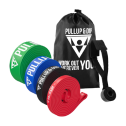
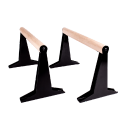
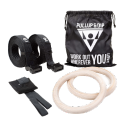



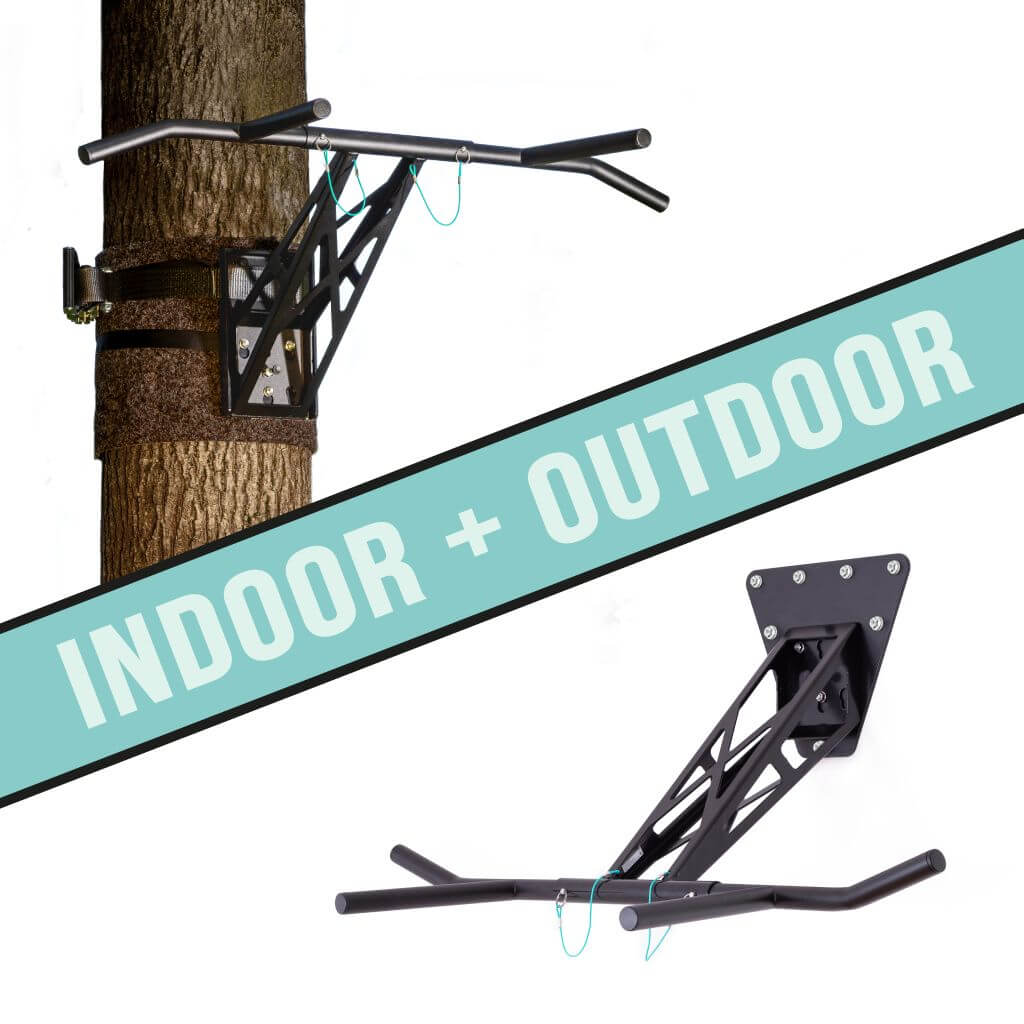
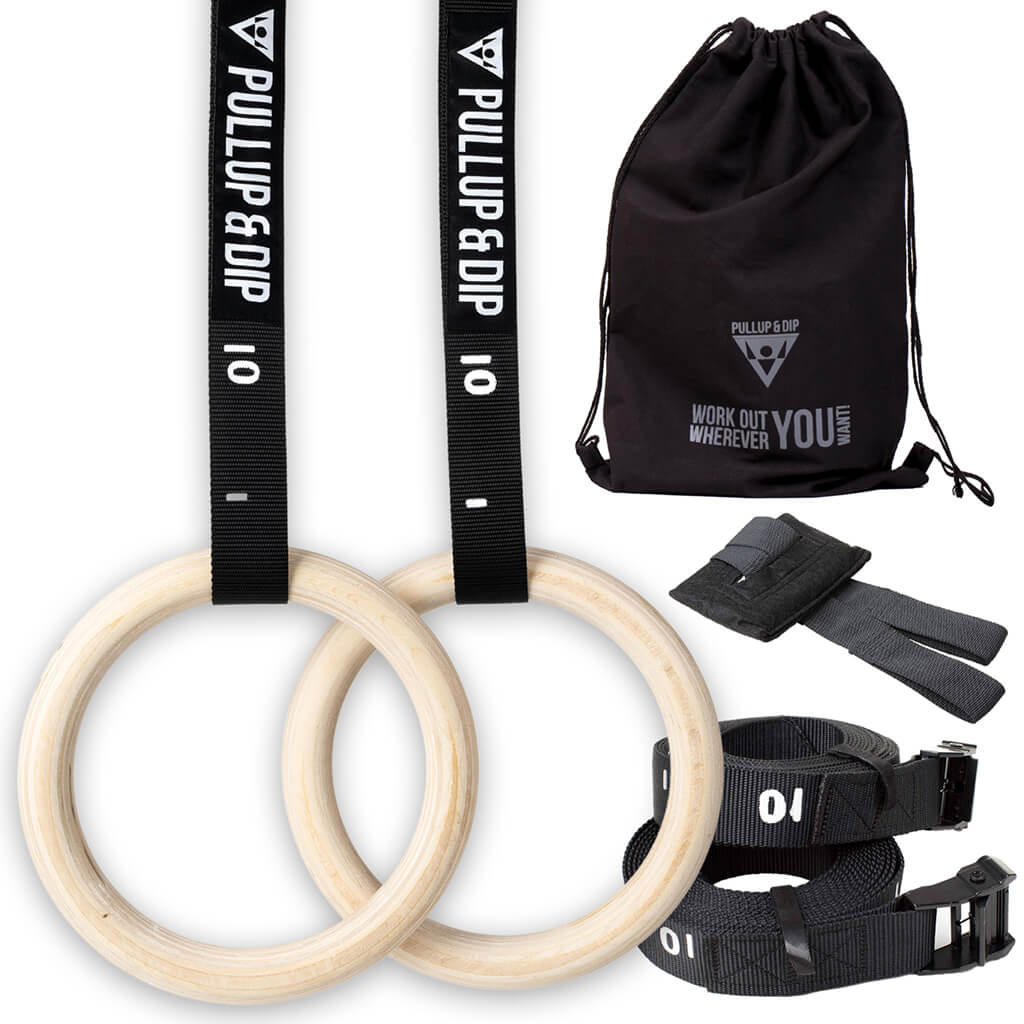
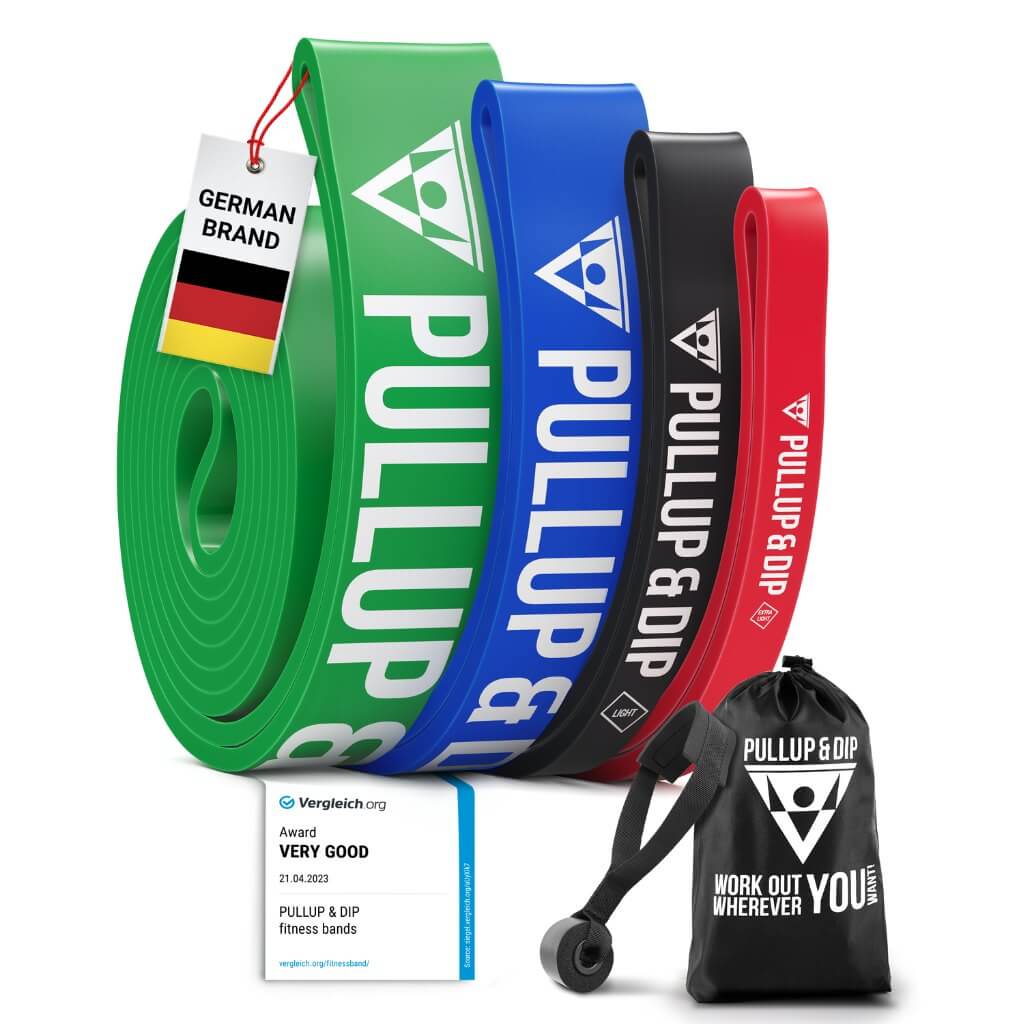
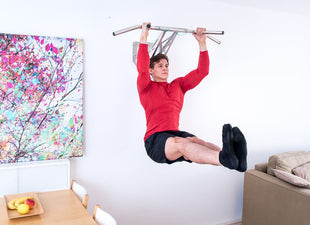
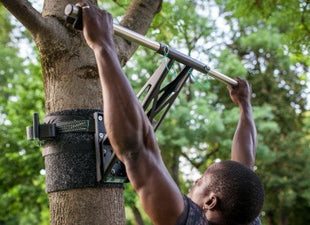
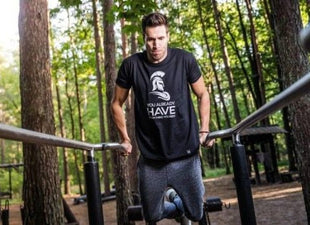
Leave a comment
All comments are moderated before being published.
This site is protected by hCaptcha and the hCaptcha Privacy Policy and Terms of Service apply.